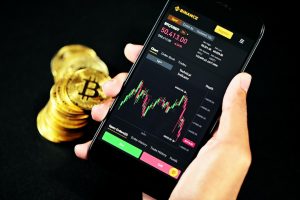Leverage in forex trading refers to the borrowing of funds from a broker to increase the potential return on an investment. It is a popular tool used by many traders to magnify their profits, but it also involves a high level of risk. In this article, we will explore how leverages work in forex trading and what you need to know before using it.
What is leverage in forex trading?
Leverage is a financial tool that allows traders to increase their exposure to the currency markets by borrowing funds from a broker. The amount of leverage offered by a broker depends on the regulatory requirements of the country they are based in. In the United States, for example, the maximum leverage allowed is 50:1, while in other countries, it can be as high as 500:1.
Leverage allows traders to open larger positions with a smaller amount of capital. For example, if a trader has $1,000 in their account and the broker offers a leverage of 100:1, they can open a position worth $100,000. This means that the trader only needs to put up $1,000 of their own money to control a $100,000 position.
How does leverage work in forex trading?
Leverage works by allowing traders to control a larger position than they would be able to with their own capital. This means that the potential profits or losses are magnified. Let’s take a look at an example:
Suppose a trader with $1,000 in their account wants to buy 1 lot of EURUSD, which is worth $100,000. Without leverage, the trader would need to put up the full $100,000 to open the position. However, with a leverage of 100:1, the trader can open the same position with just $1,000 of their own money.
If the price of EURUSD moves in the trader’s favor by 1%, they would make a profit of $1,000. However, if the price moves against them by 1%, they would lose $1,000. This means that leverage can magnify both profits and losses, making it a high-risk tool.
What are the risks of using leverage in forex trading?
Leverage can increase the potential return on investment, but it also involves a high level of risk. The main risk of using leverage is that it can magnify losses, which can lead to a margin call. A margin call occurs when the trader’s account balance falls below the required margin level, and the broker closes out their positions to prevent further losses.
Another risk of using leverage is that it can increase the emotional pressure of trading. When traders see large profits, they may become overconfident and take on more risk than they can afford. Conversely, when they see large losses, they may become fearful and close out their positions too early, missing out on potential profits.
What should traders consider before using leverage?
Before using leverage, traders should consider their risk tolerance, trading strategy, and financial situation. It is important to understand the potential risks and rewards of using leverage and to have a clear plan in place for managing risk.
Traders should also ensure that they are trading with a reputable broker that is regulated by a recognized authority. This can help to protect them from fraud and ensure that their funds are safe.
Finally, traders should be aware that leverage is not a magic bullet that can guarantee profits. It is a tool that can be used to increase the potential return on investment, but it should be used with caution and only by experienced traders.
In conclusion, leverage is a powerful tool that can be used to magnify profits in forex trading. However, it also involves a high level of risk and should be used with caution. Traders should understand the potential risks and rewards of using leverage and have a clear plan in place for managing risk. By following these guidelines, traders can use leverage to their advantage and increase their potential returns in the currency markets.





